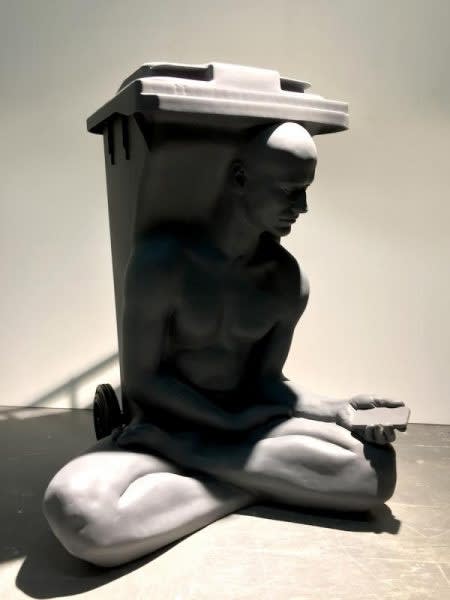Gazelli Art House is pleased to announce that Recycle Group are currently exhibiting the intervention exhibition at The Pushkin State Museum of Fine Arts.
The project Homo Virtualis has been specially prepared for the Pushkin Museum. It reflects artists’ thoughts regarding the transformation of art perception in the mass media age.
16 objects made with different techniques will be placed in the halls of Ancient World and Middle Ages art, as well as among Renaissance sculptures of the permanent exhibition.
The Recycle Group artists play a unique game with visitors by placing their objects and sculptures in the space of a classical museum. They offer works of art that visually resemble pieces of ancient artifacts but in reality are made of polyurethane and plastic. They are actually post-industrial waste, and at the same time they are a subtle reflection about the “personal dimension” in the virtual reality age. Relics of “classical art” (or, at least, something that a modern viewer could interpret as an element of “high culture”) become a part of the “archeology of the future.” Icons of popular networks seem to brand the museum space and give sculptures additional meanings. The artists of the group ask visitors: how can we measure the authority, influence, and popularity of an individual artist or an entire museum today — using a citation index, the number of followers in social media, or the number of likes or selfies taken in front of works of art?
The exhibition includes new objects made using augmented reality, which should be viewed with a special mobile app. Using augmented reality as a new tool for art interpretation, artists formulate laws of the new figurativeness existing at the intersection of virtual and material worlds. Such objects are displayed in a classical museum next to pieces of ancient and Western European art, thus playing a game with visitors, inviting them to find unconventional and sometimes paradoxical rhymes and likenesses resonating between modernity and the classics.
Sculptures from previous projects are also presented at the intervention, including Noah’s Ark and Educator 12 which were first displayed in 2015 at the Conversion exhibition as part of the parallel program of the 56th Venice Biennale of contemporary art. These objects of art tell about human life in virtual space: an individual can achieve digital immortality by keeping data in a cloud or using storage services.
Homo Virtualis demonstrates the development of the main theme of human being/machine in Recycle Group’s creative works. Digital technologies and social networks increasingly intrude into everyday life, thus transforming an individual’s understanding of the world and classical art. They form an approach to life that makes the contemporary audience ignore the difference between the high and the low, the unique and the widely reproduced. Regardless of whether it is a person, a masterpiece, or a brick wall — they are all the same in front of a smartphone lens. What used to be a revolution in figurative art in the middle of the 20th century has become an ordinary pixel code today.
Curators: Alexandra Danilova, deputy head of the Department of 19th and 20th Century European and American Art, Pushkin State Museum of Fine Arts

